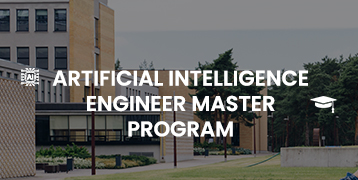
Table of Content
- Introduction
Key Modules
- Collaboration
- Automation
- Continuous Improvement
- Culture Shift
- Tools and Technologies
- Faster Delivery
- Lower Costs
Advantages of the DevOps Revolution
- Faster Time to Market
- Improved Software Quality
- Increased Agility
- Enhanced Collaboration
How to prepare for the DevOps Revolution
- Understand the principles of DevOps
- Develop a strong DevOps culture
- Learn about DevOps tools and technologies
- Embrace automation
- Focus on continuous improvement
Conclusion
Introduction
The IT operations and software development sector is transforming with a transformation which is referred to as the DevOps revolution. DevOps brings together development and operations teams to reinvent the software development process, including testing and release. With DevOps facilitating teamwork between both these teams, it shatters the silos to provide rapid innovation, high quality, and stable software.
As with the fast-paced digital age of our times, business must adopt DevOps to stay ahead. Its core attributes such as automation, CI/CD, infrastructure as code, and system monitoring are the cornerstones on which its development comes about. These deploys all allow teams to quickly react to customer demands, reduce defects, and accelerate the release of software.
Preparing for a DevOps transformation entails implementing new tools and processes, as well as adopting a new agility and productivity mindset. As a developer, IT operations expert, or manager, learning DevOps can propel your productivity and career. Become part of a movement that is changing the way technology translates into business success and allows new levels of potential in software delivery.
Key Modules
DevOps revolution is built on the premise of modules building success for businesses. Collaboration shatters silos among operations teams and development teams, enabling unrestricted communication and collaboration. Automation enables automation of mundane tasks, from testing to deployment, to render consistency and efficiency. Continuous Improvement is at the center of DevOps, where feedback loops and repeat processes allow teams to improve their processes and render better output.
One of the most fundamental Culture Shifts is to encourage openness, shared accountability, and learning from failure in an innovative environment. Various Tools and Technologies—e.g., CI/CD pipelines, containerization, and monitoring tools are enabling applications to be properly managed and deployed.
These modules lead to Faster Software Delivery of bits and patches that enable the companies to gain competitive advantage. They also ensure Reduced Costs by eliminating errors, outages, and humans-in-the-loop requirements. Whoever wants to succeed in the DevOps culture must be accountable for these characteristics.
Collaboration
Collaboration is the essence of DevOps, which redraws the way operations and development teams work together to deliver shared goals. The two teams previously worked in silos, and gaps in communication, delay, and misinterpretation followed. DevOps breaks down divisions by establishing a shared sense of accountability and communication throughout the software development lifecycle.
Good team work is that in which the development team, test engineers, and developers have confidence in one another, have a common goal, communicate freely, and proceed like an efficiently well-oiled machine. Team work speeds up debugging, minimizes bugs, and stabilizes deployment. Openness and information sharing are facilitated by mechanisms such as chat platforms, version control, and shared dashboards.
Through trust and openness, partnership is able to respond more promptly to customer complaint and changing demands. Partnership is where innovation begins as well because it combines different ideas in a synergistic way. Lastly, good partnership in DevOps yields software of higher quality, faster delivery, and more stable IT infrastructure, and for that reason, partnership is an unavoidable force behind any organization adopting the DevOps revolution.
Automation
The Automation is the key driver of DevOps revolution, transforming software development, testing, and release. It is eliminates unnecessary drudgery and toil and enables teams to deliver more speed, accuracy, and consistency via the software development life cycle. Automation removes errors, removes bottlenecks, and enables engineers to spend good quality time thinking and problem-solving.
The most important job that needs to be automated is code merge, testing, deployment, and infrastructure management. CI/CD pipelines execute all the code merging process, running of tests, and application deployment automatically without any hesitation. Infrastructure as Code (IaC) allows the teams to provision and manage infrastructure via scripting automated code that makes environments scalable and standard.
Overall, automation accelerates delivery cycles, improves product quality, and allows for fast iteration. Automation allows teams to respond rapidly to market demand and customer feedback, and automation is a fundamental practice for these companies required to stay current in the fast-changing digital economy. Automation maximizes the full potential of DevOps.
Continuous Improvement
Continuous improvement is also one of the major ideas of the DevOps method, which aims to continuously improve processes, products, and teams. Instead of going with the status quo, teams embrace a continuous culture of improvement and learning to create greater value sooner. They accomplish this by continually asking for feedback, measuring performance metrics, and searching for bottlenecks or inefficiencies.
With repetition cycles, or Plan-Do-Check-Act (PDCA), DevOps teams test changes at small scale, get feedback, and adjust appropriately. This reduces risk and promotes innovation, and software and operations mature in parallel with user requirements and business goals.
Continuous Improvement also forms the culture in which one views failure as an opportunity to learn, and therefore collaboration and openness. Organizations can enhance quality, enhance reliability, and reduce delivery time through embracing such an attitude. Continuous Improvement then ultimately leads to aggregation of agility, making organizations competitive and responsive to a changing technology landscape.
Culture Shift
There is a need for a profound DevOps cultural transformation in the very core of an organization. The change needed is from the traditional silo teams to an open, collaborative, and trusting environment. In a DevOps culture, development, operations, and other users work together throughout the software lifecycle and share responsibility for product quality and delivery.
This culture shift provides open communication, continuous learning, and experimentation with failures as opportunities to learn and develop rather than disasters. The teams own it and work towards shared goals, outside of the silos that once choked innovation.
Apart from this, DevOps culture drives customer orientation, flexibility, and responsiveness that allow organizations to respond to evolving markets and end-user needs in a timely manner. Without this cultural transformation, though effective might the best practices and tools be, it will be of no use. Cultural transformation must be adopted to get the optimum out of DevOps and acquire business wisdom in the future.

Tools and Technologies
Tools and technology are the basis of DevOps transformation, enabling teams to automate, monitor, and refine every stage in software delivery. There is a ginormous set of tools that power the leading DevOps best practices like Continuous Integration/Continuous Delivery (CI/CD), configuration management, containerization, and monitoring.
CI/CD tools such as Jenkins, GitLab CI, and CircleCI automate standardizing to build, test, and release code, making it quicker and more consistent Configuration management solutions like Ansible, Puppet, and Chef automate infrastructure configuration and management across multiple systems. Containerization tools such as Docker and Kubernetes allow scalable and reproducible environments across systems that ease deployment and executing applications on big sets of systems.
The monitoring tools such as Prometheus, Grafana, and ELK stack Training send real-time signals of infrastructure and application health so that any kind of problem gets detected at an early point. All these three collectively form a great ecosystem which fosters efficiency, collaboration, and ongoing improvement — all the basic building blocks of successful DevOps adoption. The most important thing in DevOps is to stay current with new technologies and new tools.
Faster Delivery
Faster deployment is one of the key benefits of adopting DevOps practices, by which organizations can return new features and updates to market again on a regular basis. DevOps eliminates bottlenecks by uniting development and operations teams to facilitate the software delivery process as a whole to be sped up. CI/CD pipelines automate and test to give a push for code changes from development to production without delay.
This speedy delivery not only increases customer satisfaction with timely communication but also empowers companies to get a grip on the competition in a very dynamic market. Speedy delivery cycles induce more-frequent releases, and teams get early feedback from users while making continuous improvements. Automated testing and deployment also reduce glitches, resulting in quality releases each time.
Lastly, speed of delivery is equated with increased responsiveness and agility, which allows organizations to innovate at speed and deliver customer needs at quick speed. This element of DevOps is important for organizations that aim to thrive in the digital-first world of today.
Lower Costs
Lower expenses are among the most vital benefits of DevOps methodologies. Automating, working together, and releasing in bite-sized pieces lessens quantities of labor-intensive labor, error, and delay that lead to rework or down time cost. Automation releases large amounts of labor-intensive hand work, saving labor cost and lowering possibilities for error.
Cloud and Infrastructure as Code (IaC) optimized resource utilization prevents infrastructure spending from running amok and keeps it at the bare minimum, allowing companies to scale up or down as necessary without squandering capital. Faster delivery cycles get products and updates to the marketplace more quickly, earning revenue earlier and creating higher customer satisfaction.
Secondly, early defect detection and continued testing reduce the cost of future repairs. DevOps tends to make organizations leaner and wiser and decrease the cost of business while enhancing the product quality and reliability. Such cost-reducing strategies position DevOps as an excellent investment for sustainable development.
Advantages of the DevOps Revolution
DevOps revolution is changing the model of software development with some benefits that help organizations achieve success in a digitally competitive period. They are better speed to market, software quality, higher agility, and increased collaboration. Let us discuss each of these benefits in detail about how they result in organizational success:
Time to Market
One of the most significant advantages of DevOps is its ability to speed software release. With development cycles such as Continuous Integration (CI), Continuous Delivery (CD), and automated testing, development cycles become much faster. Updates, patches, and functionality are executed faster and with greater confidence. This allows companies to respond to market forces, customer feedback, and emerging opportunity in a timely manner. Shorter time to market translates to competitive advantage, and corporate enterprises can innovate fast and remain in harmony for quickly changing industries.
Improved Software Quality
DevOps facilitates the continuous integration and testing culture so that code is tested at every stage of the development lifecycle. Automated testing frameworks detect defects and bugs early enough so defects never make it to production. Real-time monitoring software is also tracking system performance and user satisfaction in real time, allowing teams to solve issues before they become too difficult. This benefits in making more stable, consistent, and durable software, making it simpler to use and reducing effort and cost in post-release patches.
Increased Agility
DevOps brings agility to operations and development. Through repetitive development, quick feedback loops, and processes that are constantly evolving, teams can make swift changes according to business needs or user demands. This flexibility is absolutely necessary in fast-changing markets where the likes and dislikes of customers shift incredibly fast. Hybrid methods of agile practices combined with DevOps strategies include incremental, small-change rather than grand, high-risk revolutions. This brings about ongoing improvement and accelerated cycles of innovation without compromising on stability or quality.
Enhanced Collaboration
In essence, DevOps is a subversion of silos and collaboration between development, operations, QA, and so forth. It facilitates open communication and shared accountability and reduces friction and creates less painful processes. Cross-functional teams collaborate to achieve common goals, reducing problem-solving time and increasing decision-making efficiency. Enhanced collaboration also facilitates enhanced understanding of the whole software lifecycle, enabling empathy and collaboration among teams.
How to get ready for the DevOps Revolution
The DevOps revolution is changing the manner in which organizations are releasing software and services. One and organizations must learn its basics and adopt the right mindset, methods, and tools beforehand in order to be a part of this revolution.
This is how you can get ready for the DevOps revolution by staying focused on the major areas:
Understand the principles of DevOps
Most important to being ready for the DevOps revolution is mastery of its basics. DevOps is based on collaboration, automation, CI/CD, monitoring, and feedback loops. DevOps requires removal of silos between operations and development teams and creation of shared responsibility throughout the software life cycle. Mastery of the principles listed above enables you to connect technical work with business goals and drive and enhance delivery of software.
Develop a Strong DevOps Culture
DevOps is tools and culture. Creating good DevOps culture involves creating trust-based relationships, being transparent, being accountable, and ongoing learning. The teams need to get out of the cultures of blame and be at a place where the culture brings happiness in failure as learning. Create open communication, success sharing of the results, and experimentation. Leadership does its part in spearheading this culture through ensuring people and processes align to the DevOps overall vision.
Learn DevOps Tools and Technologies
There are a number of tools supporting DevOps practice, and one must learn them. Start by learning the fundamentals of version control tools such as Git, CI/CD tool fundamentals such as Jenkins, GitLab Training, or CircleCI, and configuration management tool fundamentals such as Ansible or Puppet. Learn containerization with Docker, orchestration with Kubernetes, and monitoring and logging tools such as Prometheus, Grafana, and ELK Stack. Knowing how they function in a pipeline allows you to develop, test, and deploy applications with ease.
Embrace automation
Cooperation is at the core of any effective DevOps practice. Get developers, testers, operations, and even business stakeholders to collaborate friction-less. Stand-ups, dashboarded-by-the-team, and shared comms facilities (Slack, MS Teams, etc.) can assist to enhance coordination. Self-managing cross-functional teams must be given control to craft team-level decisions without hand-offs, and facilitate faster flows. Investment in cooperation not just enhances speed of delivery, but also software quality and employee engagement.
Focus on continuous improvement
DevOps is not a set-it-and-forget-it activity it is a continuous repeat process, tool, and culture improvement process. Practice techniques such as retrospectives, feedback loops based on metrics, and process improvement in a manner to facilitate constant improvement. Compare to KPIs such as deployment frequency, lead time on change, and mean time to recover (MTTR). Foster experimentation, reflection, and continuous improvement across teams. Such an improvement focus assures your DevOps approach remains aligned with evolving business demands and consumer desires at all times.
Conclusion
GoLogica is an ideal destination to Get Ready for DevOps Revolution by offering you the skill set, tools, and attitude to handle the today’s fast-paced technology world. With more and more industries embracing DevOps practices to speed up software delivery and improve operational effectiveness, it is the right time that one should get proper training for professionals who want to keep themselves updated.
Our DevOps course educates you from scratch to the most advanced tools such as Jenkins, Docker Training, Kubernetes, Ansible, etc. You will have hands-on practice on live projects, and it will help you to apply automation, continuous integration, and deployment techniques effectively.
GoLogica also attempts to establish a DevOps culture of teamwork, openness, and ongoing refinement essential for business and innovation success. As a prospective DevOps engineer, system administrator, or software developer, our training allows you to span the DevOps lifecycle and prepare for taking high-paying roles.
Join us at GoLogica today and be one of the pioneers who welcome the DevOps revolution. Ride the right skills and knowledge in your career to lead and prosper with the future of DevOps!











